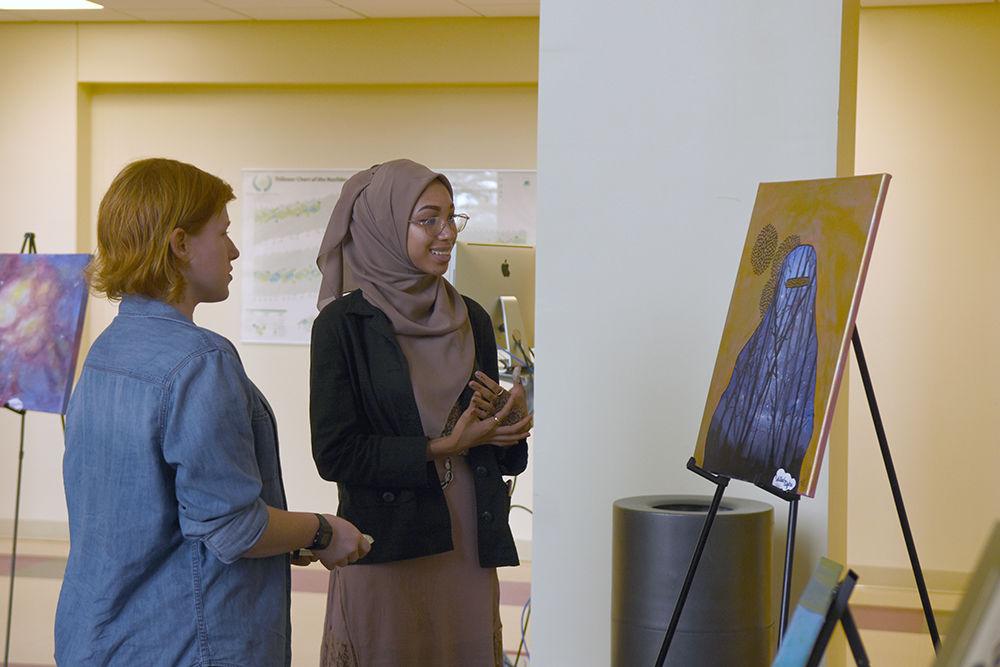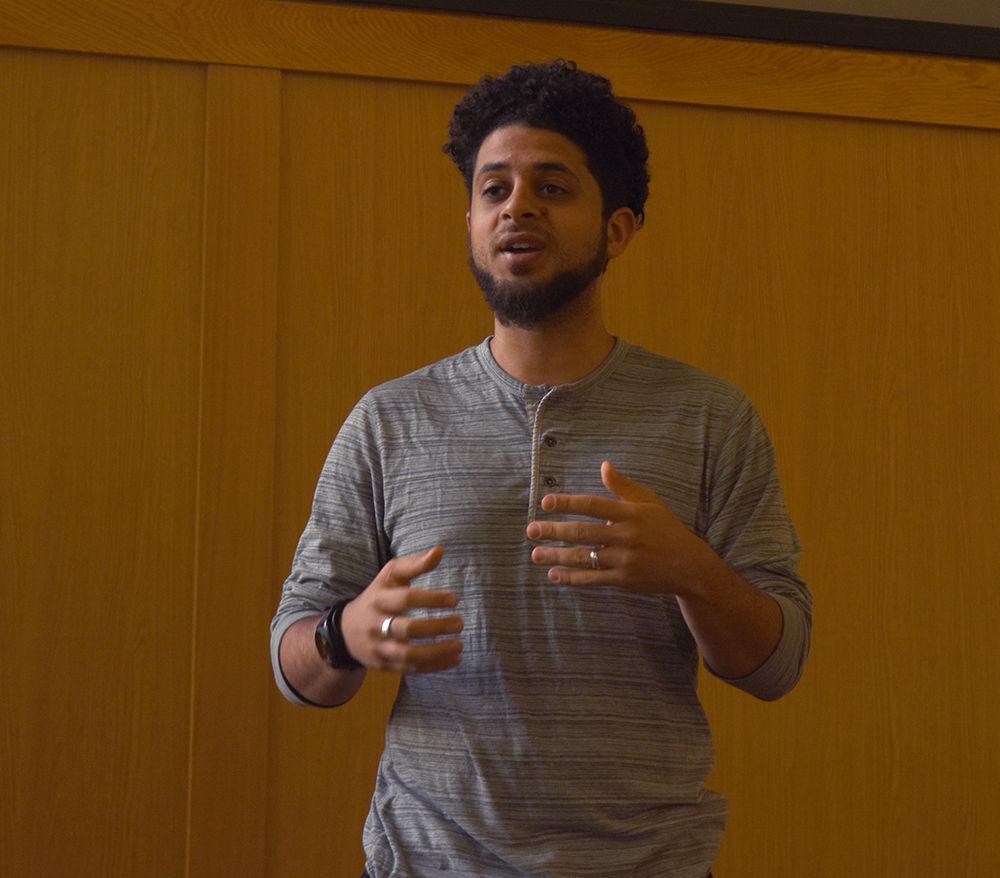Wednesday night, the Muslim Student Association held an art expo in Riddick Hearth, exhibiting art created by Muslim students. The art touched on contemporary issues facing Muslims, along with pieces inspired by Arabic writing, Middle Eastern architecture and Islamic traditions. Students also delivered spoken word pieces, and some spoke about their paintings.
Sumaiyah Jones, a student at Wake Tech Community College, said that although she is Muslim, her art is not necessarily about Islam or her religion. Jones also believes it is important to depict women of color in paintings, a group she sees as underrepresented in the world of art. She talked about a painting she did that is evocative of a woman in a burqa.
“I wanted to do a piece that was showing that a woman can still be feminine while covering her body completely,” Jones said. “Just because she’s covered in a complete burqa, it doesn’t make her any less woman, and it doesn’t make her any less human as well.”
Samah Hasan, a senior studying graphic design, showed three pieces of art she made, two of which were created by laser cutting wood, and one of which she prepared Tuesday for the expo. One of Hasan’s pieces is woodcut calligraphy, containing the Arabic rendition of the Basmala, a common Islamic phrase meaning: “In the name of God, the Most Gracious, the Most Merciful.”
“With Arabic Calligraphy, it’s meant that you’re supposed to read it, but it’s still an art,” Hasan said. “You don’t really look at it just as writing, you look at it as an art piece. You make some letters bigger and some things smaller to make it visually appealing.”
Maria Arfeen, the outreach director for MSA and a senior studying nutrition science, led the planning of the Art Expo and the other Islam Awareness Week events. She said this event was meant to show the diversity of talent within the Muslim community, and in part is meant to fight the stereotype that “all Muslims are either engineers or doctors.”
“Oftentimes, art is not something you would associate with a Muslim, but there are several talented artists in our community,” Arfeen said.
According to Arfeen, finding works of art to display was relatively easy because of how willing the artists were to show their work.
“It was really easy to get a lot of people, in a relatively short amount of time, to commit to bringing their artwork,” Arfeen said.
Arfeen also explained that part of the purpose of the event was to exhibit the diversity of art created by Muslims.
“You’ll notice that some of the pieces are not related to Islam,” Arfeen said. “I think it’s a good thing. It shows that our talents aren’t just secular. They make non-secular paintings, as well.”
Joshua Dejoya, a junior studying biological sciences, was brought to the event because of tensions over Islam and wanted to learn for himself about the culture and experiences of Muslims. He said he noticed the diversity of expression in the artwork at the expo.
“You have influences that span beyond what we typically think of as the Muslim world,” Dejoya said. “There’s diversity within this one group.”
Rakan DiarBakerli, a graduate student studying art and design, spoke at the event about major themes in Islamic art, including the lack of depictions of living figures. According to him, the reason Muslim artists tend to stray from depicting living figures, focusing instead on calligraphy and geometric patterns, has its roots in the Islamic view that such depictions may be considered “false idols.”
“When you think of Islamic art … it’s nothing really reflecting statues or paintings of people or living things,” DiarBakerli said. “One of the first, main reasons that is the case is when Islam was first revealed to the people, it combated idolatry. People were worshipping idols and statues; they would create these statues with their own hands, then they would worship them.”
This pattern of avoiding depictions of living things, according to DiarBakerli, is related to the reason depictions of the prophet Muhammad are banned in Islam. He drew a comparison to depictions of Jesus in Christian tradition.
“Even though it’s a representation of God, it can come off as worshipping an idol,” DiarBakerli said. “It’s essential recreation of idol worshipping … In Islam, we are not allowed to depict prophets past, especially prophet Muhammad peace be upon Him, so that we don’t fall into that same trap or cycle.”
The event closed with spoken poems presented by Safi Ahmed, a senior studying computer science, and Mahmoud Khader, a senior studying industrial engineering.
Rakan DiarBakerli, a graduate student in Art And Design: Animation Concentration, discusses the history of Islamic art at the MSA Art Expo on Wednesday. The event was hosted by the Muslim Students' Association to celebrate Islamic art and artists.









